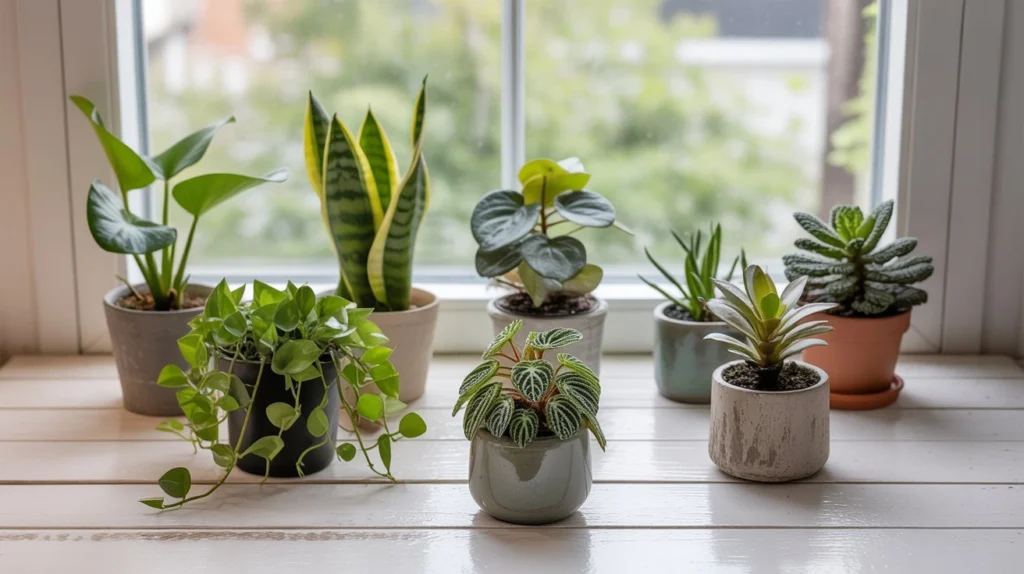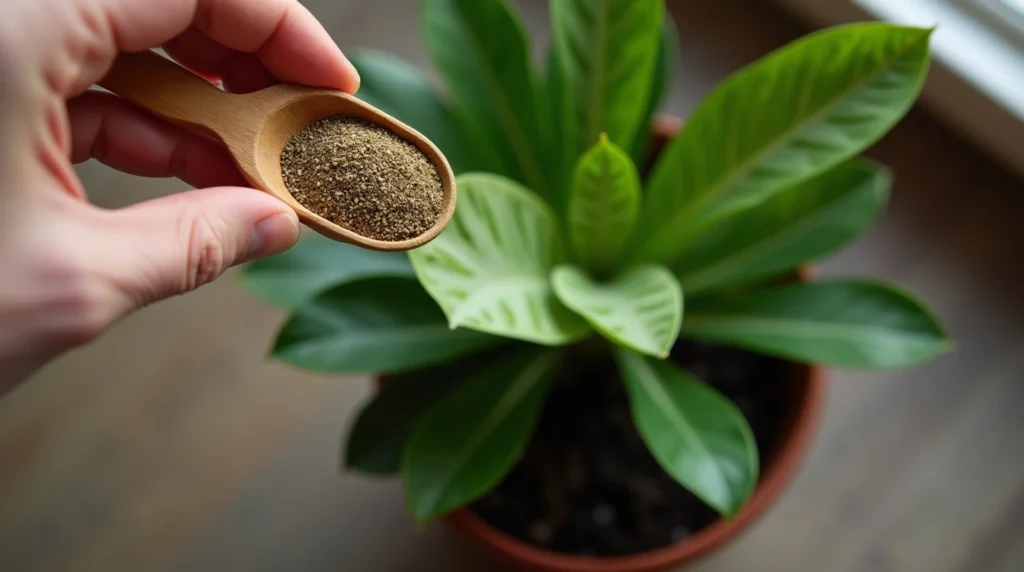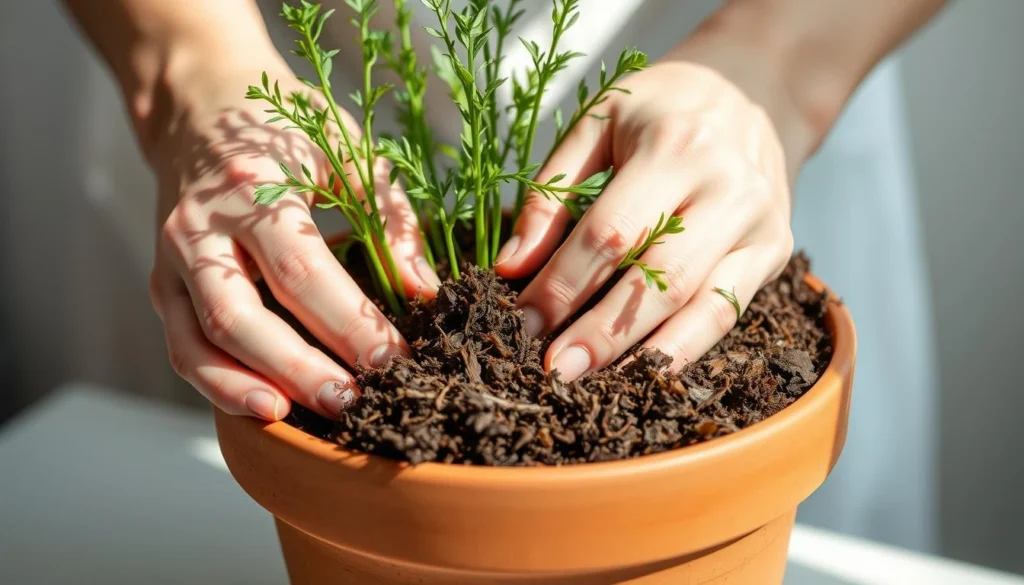
Gardening fans often look for peat moss. It’s great for keeping moisture in and making soil better. This makes it perfect for indoor plants and container gardens.
Did you know peat– moss helps prevent soil from getting too hard? This is good for indoor plants. Their roots can grow stronger and healthier.
Adding peat– moss to your container garden mix helps your plants thrive. To use peat– moss well, you need to know how to do it right.
Table of Contents
What Is Peat Moss and Why Use It?
Peat moss comes from sphagnum moss and is known for soaking up a lot of water. It’s a key ingredient in gardening to make soil better and keep it moist. This makes it perfect for indoor plants and gardening in containers.
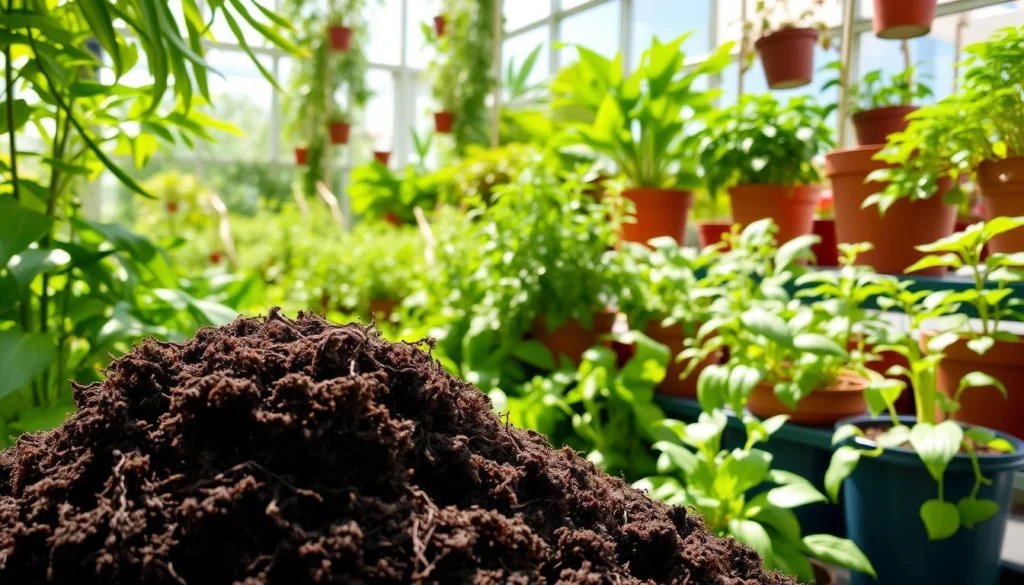
The Origin and Composition of Peat Moss
Peat– moss is made from old sphagnum moss that builds up in bogs. It can hold a lot of water, which helps keep soil hydrated. Its acidic nature also helps lower soil pH, which is good for some plants.
Key Benefits for Plant Growth and Health
Using peat–moss in gardening has many key benefits for plants:
- It makes soil structure and air better
- It keeps water in the soil, so you don’t have to water as often
- It lowers soil pH, which is great for acid-loving plants
- It makes nutrients in the soil more available
Adding peat–moss to your soil mix helps your plants grow better.
Environmental Considerations and Sustainable Harvesting
Even though peat– moss is good for plants, getting it can harm the environment. It can damage peat bogs and release carbon. To lessen these problems, many suppliers use sustainable harvesting practices.
When you buy peat–moss, choose products that are certified as sustainably harvested. This helps reduce your impact on the environment.
Preparing and Using Peat Moss Effectively
To get the most out of peat moss, it’s key to know how to prepare and use it. Peat–moss is a valuable organic peat–moss that can greatly improve soil and plant health.
Properly Hydrating Dry Peat– Moss
Rehydrating dry peat-moss can be tricky, but it’s vital for its full benefits. Start by filling a container with water. Then, add the peat– moss slowly, stirring until it’s fully wet. This method avoids dry clumps that block water.
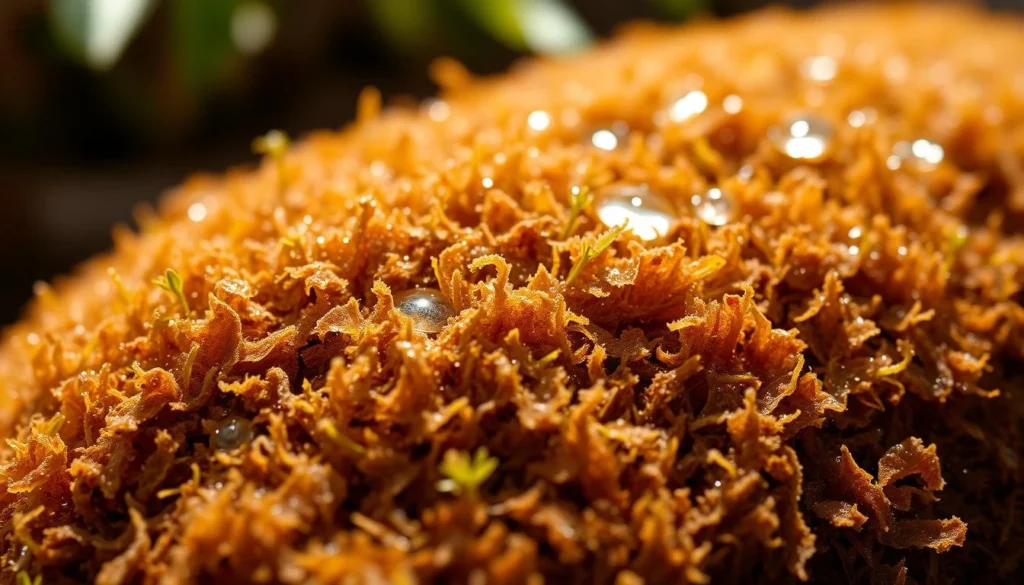
Creating Optimal Soil Mixes for Different Plants
Peat– moss can be mixed with other ingredients to meet different plants’ needs. For example, adding peat– moss to perlite or vermiculite improves drainage and aeration. This is great for succulents and cacti.
Mixing peat–moss with compost creates a nutrient-rich soil for plants like tomatoes and peppers.
- For seed starting: Mix peat– moss with perlite or vermiculite for improved drainage.
- For tropical plants: Combine peat–moss with compost for a nutrient-rich mix.
- For cacti and succulents: Use a mix of peat–moss, perlite, and sand for enhanced drainage.
Tools and Materials You’ll Need
To effectively use peat–moss, you’ll need some basic tools and materials. You’ll need a container for mixing, a measuring cup or scale, water, and other soil amendments like perlite or compost. Having the right tools makes the process easier and more efficient.
Measuring and Mixing Guidelines
When mixing peat-moss with other ingredients, following guidelines is key. A mix of 50% peat– moss and 50% other ingredients (like perlite or compost) is a good start. But, adjust the ratio based on your plants’ needs. Mix everything well to ensure even distribution.
| Plant Type | Peat Moss Mix Ratio | Additional Ingredients |
|---|---|---|
| Seed Starting | 50% Peat Moss | 50% Perlite/Vericulite |
| Tropical Plants | 50% Peat Moss | 50% Compost |
Peat Moss for Indoor Plants: Step-by-Step Guide
Looking to boost your indoor plants? Peat– moss is a great choice. It improves soil structure, holds more water, and supports healthy roots.
Best Indoor Plants That Thrive with Peat Moss
Some plants love peat moss more than others. Ferns and peace lilies do well in moist soil with peat– moss. Snake plants and spider plants also benefit from better drainage and aeration.
- Ferns
- Peace lilies
- Snake plants
- Spider plants
Think about your plants’ needs before choosing. Peat –moss can help meet those needs.
Repotting Houseplants with Peat Moss Mixtures
Repotting is a chance to add peat moss to your soil. Start by picking a pot that’s just a bit bigger than the current one. Mix peat – moss, perlite, and potting soil for a good mix.
- Choose a pot that is the right size.
- Mix 20-30% peat–moss with potting soil and perlite.
- Gently remove the plant from its pot and trim old roots if necessary.
- Place the plant in the new pot and fill with the peat– moss mixture.
Maintenance, Watering, and Fertilizing Tips
Proper care is key for peat moss soil. Water when the top inch of soil is dry. Avoid too much water to prevent root rot. Fertilize regularly but at a lower rate, as peat–moss holds nutrients.
Watering Tips: Check soil moisture often and water deeply when needed.
Fertilizing Tip: Use a balanced fertilizer at half the recommended strength.
Troubleshooting Common Issues
Even with good care, problems can happen. If your plants struggle, check for signs of overwatering or underwatering. Adjust your care as needed.
| Issue | Cause | Solution |
|---|---|---|
| Yellowing leaves | Overwatering | Reduce watering frequency |
| Wilting | Underwatering | Increase watering frequency |
Container Gardening with Peat Moss
Container gardening needs the right mix for healthy plants. Peat– moss is key, improving soil, retaining water, and boosting growth.
Creating the Perfect Container Mix
For a great mix, blend peat-moss with perlite, vermiculite, or compost. Aim for 20-30% peat moss and 70-80% other stuff. This mix keeps moisture, fights weeds, and controls soil temperature.
- Mix 1 part peat– moss with 2 parts potting soil for a basic mix.
- Add perlite or vermiculite for better drainage and air.
- Compost adds vital nutrients.
Using Peat Moss for Different Container Types and Sizes
Peat moss works in all container sizes, from small pots to big planters. Use more peat– moss in small pots for moisture. In large ones, use less.
- For small pots (less than 6 inches), mix 30-40% peat– moss.
- Medium pots (6-12 inches) get 20-30% peat– moss.
- Large planters (over 12 inches) use 10-20% peat– moss.
Seasonal Considerations and Adjustments
Seasons change, so your garden might need mix tweaks. In summer, water more often. In winter, water less to avoid root rot.
Seasonal Tips:
- Summer: Water more often and add mulch to keep moisture.
- Winter: Water less and protect from cold.
Alternatives to Peat Moss for Eco-Conscious Gardeners
Eco-friendly gardeners have options like coconut coir, bamboo fiber, or recycled compost. These alternatives offer similar benefits to peat– moss but are more sustainable.
Coconut coir is a top choice, great for water retention and aeration. Try it in your mix.
Read More :
How to Care for Indoor Plants in Summer (Complete Seasonal Guide)
Conclusion
You’ve learned how peat– moss can change your indoor plants and container gardening. It helps create the best soil mixes for healthy growth.
Peat– moss is great for gardening. It makes soil better and keeps it moist. It’s perfect for indoor plants, keeping them watered and fed.
Using peat moss in your garden makes plants healthier and more vibrant. It’s good for both new and experienced gardeners. So, use peat– moss to help your plants grow well.
FAQ
What is peat moss and how does it benefit my plants?
Peat– moss is made from partially decayed plants. It makes soil better, holds more water, and helps good microbes grow. This all helps your plants thrive.
How do I properly hydrate dry peat moss?
Mix dry peat moss with water in a big container. Use 1 part peat– moss to 1-2 parts water. Let it soak for a few hours or overnight.
Can I use peat moss for all my indoor plants?
Most indoor plants like peat moss. But, cacti and succulents need less or no peat– moss. Check what your plants need.
Is peat moss environmentally friendly?
Getting peat moss can harm the environment. It can damage ecosystems and release carbon. Choose sustainable peat– moss or try coconut coir or compost instead.
How often should I repot my plants using peat moss?
Repot your plants every 1-3 years. This depends on how fast they grow. Use fresh peat– moss mix to keep the soil right.
Can I mix peat moss with other soil amendments?
Yes, you can mix peat moss with perlite, vermiculite, or compost. This makes a good soil mix. Just make sure it’s right for your plants.
What are some alternatives to peat– moss for container gardening?
You can use coconut coir, compost, or well-rotted manure instead. They offer similar benefits to peat moss but are better for the planet.
How do I store peat moss to maintain its quality?
Keep peat– moss dry and cool, out of sunlight. Store it in a sealed container or bag to keep it fresh.
